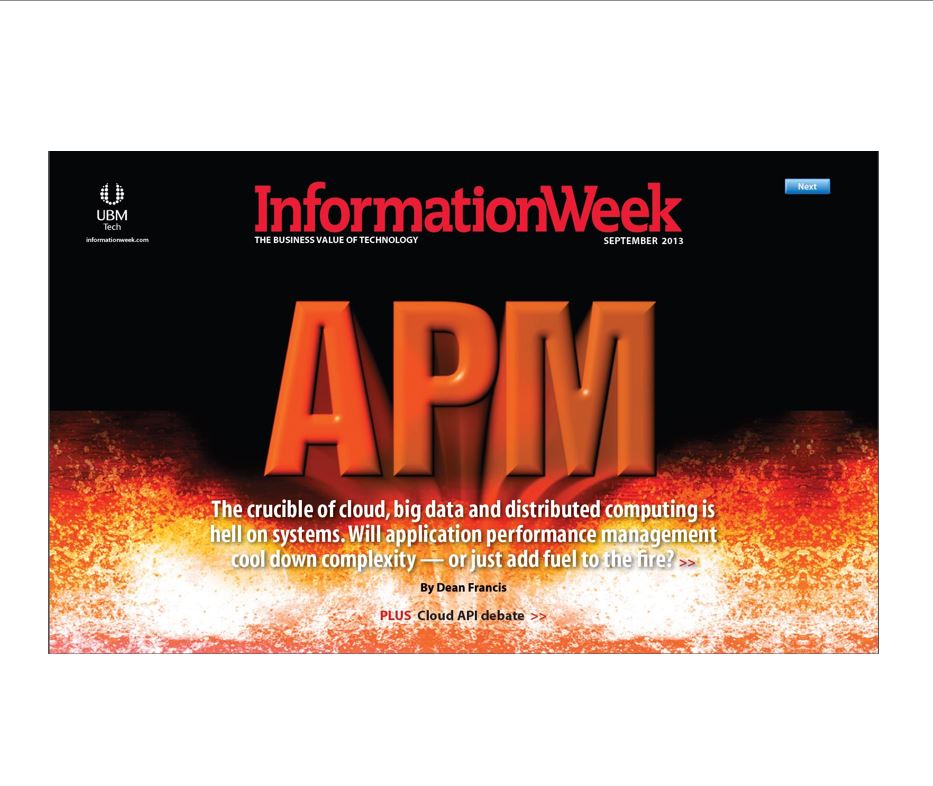
Fusion PPT’s Article on “APM: Under Fire” Featured on Cover of InformationWeek
Fusion PPT article “APM: Under Fire: Why You Need APM More Than Ever,” written by Enterprise Architect Dean Francis, has been featured on the cover of the September issue of InformationWeek. Francis, an IT expert with over 20 years in the field of IT services, examines the results and implications of InformationWeek’s recently conducted 2013 Application Performance Management (APM) Survey.
Managing applications has never been an easy task, and virtualization, cloud applications and infrastructure, and big data all make the job that much harder. The complexity of application delivery is increasing, but IT still needs to manage application performance and availability, and collect performance metrics. Given this increased complexity, organizations could lose control of their applications and systems in all the confusion.
InformationWeek’s 2013 APM Survey shows that APM is less popular and users of APM are less satisfied with APM tools than when the survey was last conducted in 2010. Among the most popular reasons for not using APM tools are 1) the time it takes staff members to implement APM tools correctly; 2) lack of expertise needed; and 3) cost, in that order. Out of the respondents still using APM tools, less than half (only 44%) said that they were satisfied with their tools (that is down from 62% in 2010). The reason for this decrease? Complexity.
“Our take [is that] the volume and variety of data and architectural complexity have increased greatly since 2010, and some APM vendors have not kept up,” writes Francis. “That shortcoming has forced CIOs to throw people at the problem.” Businesses are struggling to get a handle on the multitude of data generated by today’s complex virtual and cloud-connected systems.
APM tools are needed to automatically correlate so much data and produce understandable metrics, but the APM tools are themselves not easy to implement. Two particular sources of issues with application performance management are when IT teams use hybrid cloud systems, and trying to get a handle on the vast array of data sources. So what can organizations do about this problem?
Francis continues, “The future of APM is using this vast array of data sources to isolate current and potential application performance problems, turning a headache into an advantage.”
In his article, Francis combines analysis of survey results with suggestions for how to use APM tools to better manage the proliferation of complex applications and systems. “Don’t write off APM just yet,” Francis continues, “if there’s one thing that we can expect to see in a landscape this difficult, it’s change.”

